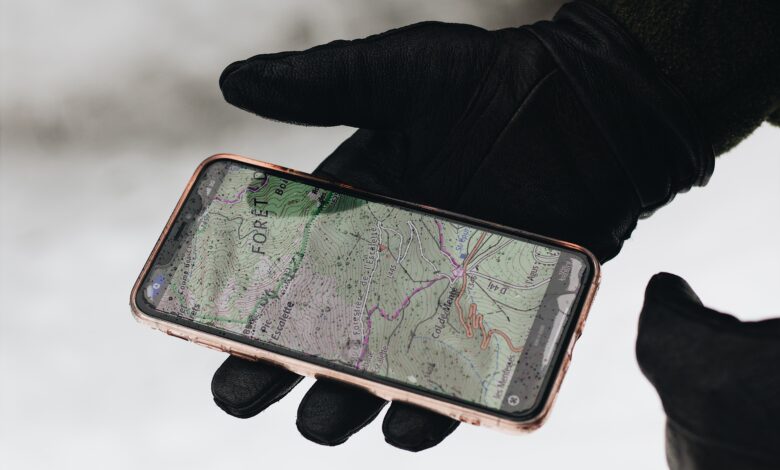Securing Your Privacy: How to Disable Phone Tracking Features

In the shadows of our online lives, we may not realize how closely we are being monitored. Our smartphones, once seen as powerful tools for communication and productivity, are now potential vessels for surveillance. But fear not! This article is your guide to reclaiming your privacy and ensuring that your smartphone remains an extension of you, not Big Brother.
Part 1: Understanding Your Phone’s Tracking Features
Before you can disable phone tracking on your device, it is essential to understand how they work. There are multiple ways your device can track your movements and activities:
- GPS: This is the most well-known tracking feature. It utilizes satellite-based positioning to determine your location accurately.
- Wi-Fi: Your phone can estimate your location based on the Wi-Fi networks in your vicinity.
- Bluetooth: Similarly, your device can track your position by detecting nearby Bluetooth devices.
- Cellular data: Lastly, your phone can triangulate your location using cellular towers.
Knowing these tracking methods will empower you to disable them effectively.
Part 2: Adjusting Location Settings
Your first line of defense against tracking is controlling your location settings. Follow these steps to manage location access on your smartphone:
- Access the Settings app: This is where you can find and modify your location settings.
- Find Location Services: This section typically falls under “Privacy” or “Security.”
- Disable Location Services: Turn off this setting entirely, or customize it for individual apps. Consider allowing location access only when using specific apps that require it, like maps or ride-sharing services.
Remember that disabling location services may reduce the functionality of certain apps, so choose wisely.
Part 3: Disabling Wi-Fi and Bluetooth Tracking
While Wi-Fi and Bluetooth are useful for connecting to networks and devices, they can also be exploited for tracking purposes. To minimize this risk, follow these steps:
- Turn off Wi-Fi: When not actively using Wi-Fi, disable it to prevent your phone from scanning for nearby networks.
- Disable Bluetooth: Similar to Wi-Fi, turn off Bluetooth when not in use.
- Use Airplane Mode: Activating this mode will disable both Wi-Fi and Bluetooth, providing an extra layer of privacy.
Part 4: Limiting Ad Tracking
Advertisers often use tracking data to target you with personalized ads. To restrict ad tracking, follow these steps:
- Access the Settings app: Navigate to the “Privacy” or “Security” section.
- Find the advertising settings: These settings may be labeled as “Ads,” “Ad Personalization,” or “Advertising ID.”
- Opt-out of ad tracking: Disable personalized ads or reset your advertising ID to minimize data collection.
Part 5: Assessing App Permissions
Your smartphone apps may request access to various features, such as your location, microphone, or camera. Carefully review these permissions to avoid giving away too much information:
- Access the Settings app: Find the “Apps” or “Applications” section.
- Review app permissions: Browse through your installed apps and review the permissions they have been granted.
- Revoke unnecessary permissions: For any app with questionable permissions, consider revoking access or uninstalling the app altogether.
Part 6: Utilizing Privacy-Focused Alternatives
Consider using privacy-focused alternatives to popular apps and services that may collect excessive data:
- Messaging: Use encrypted messaging apps like Signal or WhatsApp.
- Browsing: Use privacy-focused browsers like DuckDuckGo or Brave.
- Search: Opt for search engines that don’t track your activity, such as DuckDuckGo or Startpage.
By choosing privacy-focused alternatives, you can minimize the amount of personal data that is collected and shared.
Part 7: Keeping Your Phone’s Software Updated
Regularly updating your phone’s software is crucial for maintaining privacy and security. Updates often include patches for vulnerabilities that could be exploited by hackers or trackers. To update your device, follow these steps:
- Access the Settings app: Navigate to the “System” or “About Phone” section.
- Find software updates: Look for the “Software Update” or “Check for Updates” option.
- Install updates: If an update is available, follow the prompts to download and install it.
Make it a habit to check for updates periodically to ensure your device stays protected.
Conclusion: The Art of Digital Self-Defense
Securing your privacy in the digital realm is akin to mastering a new martial art. It requires diligence, practice, and adaptability. By following the steps outlined in this article, you can transform your smartphone into a fortress of privacy, safeguarding your personal information from prying eyes. As technology evolves and new threats emerge, stay vigilant and continue honing your skills in the art of digital self-defense.



